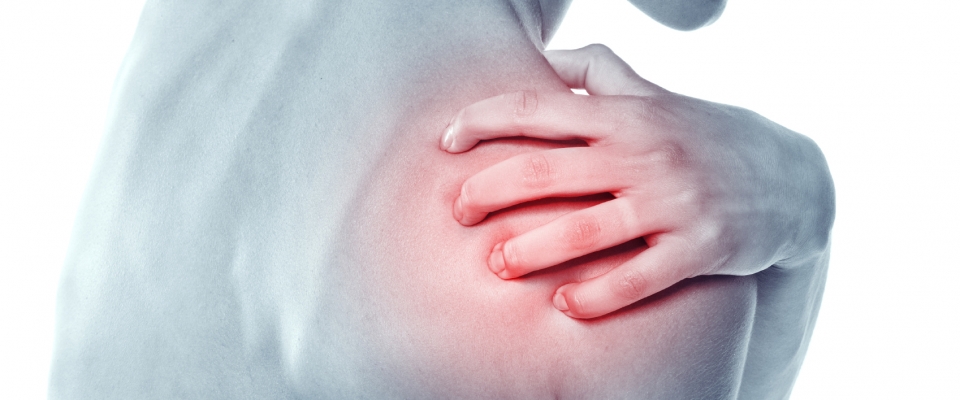An article published in the American Family Physician Journal on Chronic Shoulder Pain emphasized the value of physical therapy that focuses on specific diagnoses. According to statistics, an estimated 20% of the population will suffer from shoulder pain during their lifetime. Also, shoulder pain is the second most common musculoskeletal problem after low back pain. Successful treatment begins with an accurate diagnosis made by the primary care physician and an accurate assessment by the physical therapist of the specific muscles, tendons, ligaments and joints involved.
There are many causes of Chronic Shoulder Pain. The most common causes are adhesive capsulitis (frozen shoulder), osteoarthritis, and rotator cuff issues. Each one is treated differently; most respond well to conservative treatments, but on rare occasions, surgery may be necessary.
Physical therapy is commonly prescribed for most chronic shoulder pain. The focus of physical therapy depends on the underlying cause. The article refers to recent evidence demonstrating that shoulder stretching and strengthening improves short-term recovery and long-term function in patients with chronic shoulder pain. Traditionally, therapeutic tools such as heat, ice, ultrasound, and electrical stimulation have been used to treat chronic shoulder pain. Evidence suggests these therapeutic tools alone cannot treat chronic shoulder pain without manual therapy.
Frozen Shoulder
Adhesive capsulitis (frozen shoulder) can be particularly challenging because of the long duration of the symptoms of pain, stiffness and loss of function of the shoulder. Physical therapy is directed at decreasing the duration of these symptoms and quicker restoration of full range of motion and function. Frozen shoulder has traditionally responded well to stretching. Unfortunately, the progress is oftentimes slow, but more advanced techniques can speed up the recovery. The more advanced stretching techniques are referred to as manual therapy, which includes highly skilled hands-on techniques of joint mobilization. The degree of manual therapy varies from gentle low-level stretching when pain is present to a more aggressive manipulation when there is more stiffness than pain. The success of physical therapy is optimized when patients actively participate in daily exercises at home. Physical therapists are instrumental in guiding patients with specific regimens of home exercise programs specifically designed and modified to reflect the recovery phase.
Glenohumeral Osteoarthritis
Glenohumeral osteoarthritis (Degenerative Arthritis of the Shoulder) presents gradual pain, stiffness and loss of motion in patients over 50 years of age. The goal of physical therapy is to improve mobility and function and advise the patient in a management program of exercise to maintain function and minimize symptoms' recurrence. To improve stiffness and loss of motion, the therapist will apply specific joint mobilization techniques to improve mobility and restore motion. In the arthritic shoulder, the rotator cuff tendons may also degenerate and possibly tear. When this diagnosis occurs, therapy is then directed toward the specific tendon and muscle involved.
Rotator Cuff Disorders
Rotator cuff disorders are sometimes thought to only happen in young athletes, but they are also prevalent in the adult and geriatric population. High-intensity repetitive movements of the shoulder, and poor body mechanics involving the entire upper extremity and spine, often cause rotator cuff disorders. Rotator cuff tendonitis is the inflammation in any of the tendons. Successful conservative treatment often includes an anti-inflammatory or analgesic medication and physical therapy. If progress is slow due to pain, a corticosteroid injection by a doctor will often allow a smoother progression of physical therapy. Soft tissue mobilization is manual therapy involving deep massage and advanced specific stretching to the inflammation in the tendon and muscle. For successful physical therapy, the physical therapist must correctly identify the site of the inflammation and then direct the appropriate treatment to that tissue. Once chronic inflammation is controlled, muscles and tendons can be stretched and strengthened with exercise. The surgical repair of a torn rotator cuff tendon is common when patients fail to improve with conservative treatment. Physical therapists guide patients through strict post-operative rehabilitation protocols.
Physical therapy encompasses a large range of treatments. The clinicians at Action Physical Therapy recognize that the benefits of physical therapy are optimized when both the physician and physical therapist accurately determine the underlying diagnosis and treatment is directed to the specific anatomical and pathological sites. Physical therapists at Action Physical Therapy have advanced training and experience with manual therapy and skilled specific stretching techniques. Our physical therapists work closely to guide our patients through progressive and safe programs of therapeutic stretching and strengthening exercises. Successful treatment is most effective when our patients actively participate in their rehabilitation process daily. Our physical therapists advise our patients in progressive home exercise programs and activity modifications to maintain the progress made in physical therapy and prevent future recurrence of chronic shoulder pain.
Dear friends,
We hope you stay healthy but if you are having pain or difficulty with mobility, we are here for you. Please call us at (215) 947-3443 for a consultation or to schedule a treatment.

